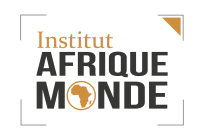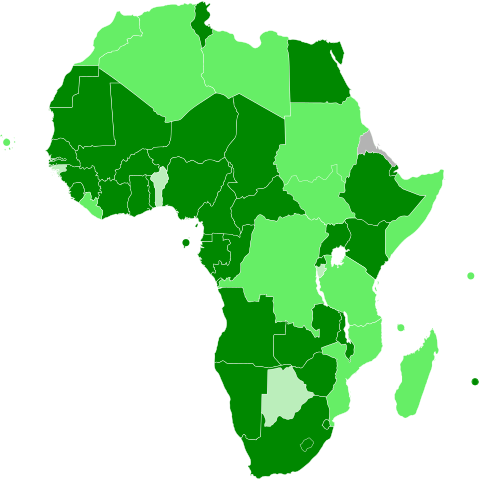The year 2015 has opened, as we know, with events that question even in Europe the “religious forces” that are at work in all societies, whatever their degree of so-called “secularization”, i.e. the distance between action and political government on the one hand, and the various expressions of religious faith on the other hand. On February 23, the President of the Crif (Conseil représentatif des institutions juives de France), Roger Cukierman, said on Europe 1: “All violence today is committed by young Muslims“, leading with these targeted remarks the President of the National Observatory against Islamophobia, and member of the CFCM (Comité français du culte musulman), Abdallah Zekri, to boycott the annual invitation of the Crif and to ask Roger Cukierman to make a “public apology”. The French President François Hollande had the good initiative to bring together, the next morning, both parties, asking them not to fuel a controversy that would be harmful to the gathering of all French people. The Rector of the Great Mosque of Paris, Dalil Boubakeur, was then able to declare to the press: “We wanted to bring the necessary appeasement so that the faithful of our two communities could once again share the principle of conviviality and living together“, while underlining “the pain of the Muslims of France who suffered from the words spoken.”
The incident deserves to be meditated on: the remarks evoke the fury that can seize both sides as soon as words attack their convictions – ideological, cultural or religious; everyone can then become furious, capable of “fury” that can lead to crime. Beliefs cannot stand to be abused, and those who live by them are ready to take revenge for what they consider to be insults. It is also important to raise the question of the meaning of the sacred, as it does not tolerate any desecration of it: crimes are called “blasphemies”, criminals “heretics” and are punished by the religious authorities concerned (fatwas…).
Our workshop will be able to reflect usefully on the more or less “absolute” nature of our convictions and their inclusion in the public and “political” space of the city (πολις) – where we have to live together in peace.
This fourth post invites us to explore the paths of Buddhahood, each of which is invited by Siddhartha Gautama, Sage of the Sakyas (Sakyasmuni), to appropriate the features that make up the finished Man and reach Nirvana….
Like probably most humans, I have never personally been insensitive to the way Buddhism presents itself to the most universal public opinion, through the statues of Buddha himself or the bodhisattvas who are on their Master’s path. If it used to be necessary to go quite far in the past – in Asia! – To meet them, contemplate them and experience the satisfactions that their vision of calm, tranquil and smiling wisdom can give, there is no longer any need today to cross considerable geographical spaces: the colonial exhibition of 1931 was the opportunity to create in Paris the great pagoda of Vincennes and the pagodas are today part of all European landscapes; their frequentation is notable and they offer themselves to visitors as places of formation to Wisdom. In France, since 1986, the Union bouddhiste de France has brought together ten congregations of the Tibetan tradition; it is the interlocutor with the public authorities. The European Buddhist University was established in Paris in 1996 and became the Institute of Buddhist Studies in 2012.
But it is also in Africa that Buddhism is taking root and spreading in all its forms, as I myself have experienced it unexpectedly. Having to recruit a collaborator in Côte d’Ivoire for a university work of Christian inspiration, the selected person had the scrupulous, when finalizing the contract, to confide to me that he himself was no longer Christian as he had been able to be by baptism and practice for some time, but that he had now chosen the path of Buddhism which spoke more to him; she had become a member of the Soka Gakkai International, claiming some twenty thousand members in Côte d’Ivoire and regularly publishing a monthly magazine – Vagues de Paix – a copy of which was offered to me: My master’s golden words, the latter being Daisaku Ikeda on the cover in conversation with Nelson Mandela, former President of South Africa. Since then I have been able to hold in my hands the book of another Buddhist of the same association, Cyrille Zounon, published under the title Living Together Beyond Religions, and I was learning that a teaching on Buddhism had been given with some success to young students in Christian theology.
An article by the Institute of Buddhist Studies in Paris states: “When we talk about the spread of Buddhism throughout the world, we rarely think of Africa… We could have suspected that a state as “Western” as South Africa had followed the same path as Europe or North America; alone, there are 32 centres out of the 54 that can currently be identified throughout the continent… and the same currents as those established in Europe: 9 Tibetan Buddhist centres, 6 Zen centres belonging to the “modern” Korean tradition Kwan-Um, 6 Theravada centres of Burmese origin, 1 centre of the Order of Inter-being of the Vietnamese master Thich Nhat Hanh, 2 centres of the “New Japanese Religion” Soka-Gakkai (located in Ghana, Mali and Côte d’Ivoire), and even 1 centre of the “Friends of the Western Buddhist Order” of English origin… The prize for success, however, goes to a school that is not well known in our latitudes: Fo Guan Shan, a recent school of Chinese Buddhism, whose headquarters are in Taiwan… As in the northern hemisphere, Buddhism is established in Africa especially through “modern” and willingly proselytizing forms… Less unexpected, the International Zen Association, founded in France by the Japanese master Deshimaru, is present in several French-speaking countries: Morocco, Cameroon, Côte d’Ivoire and Burkina Faso, but also in English-speaking Kenya… More surprising, however, is the presence of Theravâda, which alone has 12 centres and is thus at the top of the list on the entire continent !”
Born in India in the 6th century BC, Buddhism is based on the “Three Jewels” that constitute:
- the Buddha, a personality common to all Enlightenment. The first is Siddhārtha Gautama, known as Shakyamuni (the “Sage of the Sakyas”), born in Lumbini (Nepal) in 624 BC, reaching full awakening of all his spiritual abilities, and died in 544, considered as the founder of Buddhism whose year -543 is considered as the first year. Buddha is not of divine essence. He is neither an incarnation of the Indian god Vishnu, nor a savior who freely sacrifices himself for the salvation of others, but a Master exhorting his disciples to rely only on themselves, insisting on their individual responsibility and personal efforts, not seeking refuge anywhere else.
- the Dharma, a set of Buddha’s teachings recorded in writing, especially in Sri Lanka, by the successors of the historical Buddha.
- the Sangha, a community of followers on the path to enlightenment and Nirvāna.
Entering the mind of Buddhahood implies entering the fundamental intelligence of the 4 noble truths:
- Suffering is universal and consists of the dissatisfaction inherent in our current condition.
- It is generated by the multiplication of desires, obsessive attachment, and our ignorance.
- But man has the possibility to put an end to suffering and to eliminate it (Nibbana).
- The path is the middle path of balance on the “noble eightfold path” to exercise the right vision, the right discernment, the right speech, the right action, the right means of existence, the right effort, the right attention and the right concentration in order to gradually reach, at the end of this “awakening”, the illumination of nirvana. This presupposes the total liberation of the karma proper to each one (which creates it by his action, whether with the body, the word, the thought or the spirit, and is in its essence favourable or unfavourable, positive or negative) at the end of provisional rebirths in the cycle of transmigrations (samsara). To do this, it is only necessary to meditate, through simple elementary exercises from those of breathing to those of compassion in order to live the “full consciousness and serenity of the moment” in all circumstances…
But “three poisons” face the three jewels: greed (or thirst), anger (or aversion), ignorance (or indifference). Jealousy and pride are also part of it. Ignorance being the intellectual cause of suffering, the first step to freeing oneself from it is therefore, in the experience that each person makes of his life, to control his own mind by having faith in the Buddha’s teaching and with self-confidence. And since every human being is suffering, it is secondly important to feel compassion for all creatures.
Buddhism is based on two main forms of knowledge. One is certainly intellectual understanding through the rigorous study of philosophical questions using logic and reasoning; it is important to consolidate the quality of the mind through this study and the knowledge it allows to acquire. Nevertheless, this form of knowledge is limited, and does not, on its own, make it possible to attain the authentic wisdom of self-accomplishment, the second form of knowledge. This accomplishment is part of the spirit of awakening – or spirit of truth and enlightenment – and could be described as a form of knowledge superior to ordinary knowledge, an accomplishment of the fundamental nature of the spirit inherent in every human being who progresses through meditation, towards total omniscience or the learning of full consciousness, of inner calm, of the serenity of the moment, of altruistic love, of penetrating vision… These classical teachings, of spiritual rather than philosophical significance, were at the beginning of many philosophical and religious traditions that yesterday “conquered” all of Asia, from Japan to Afghanistan, integrating and/or adapting each of the cultures encountered: theravada or hinayana (small vehicle), mahayana (large vehicle), nichiren (including soka gakkaï), vajrayana (tantric)… and today conquer Europe, the Americas, Africa. In the appendix, we can read the Charter by which the International Soka Gakkai completes its strictly educational mission with an International Movement for Peace.
Denis Maugenest
Download the weekly ticket of March 2nd in pdf format.
Download in annex the charter of the International Soka Gakkai.
Do you wish to continue the reflection with the IAM, anxious to contribute to the emergence of African civilization in the contemporary world, and to contribute to the work of the “Religious Pluralism” workshop? Contact us here.



